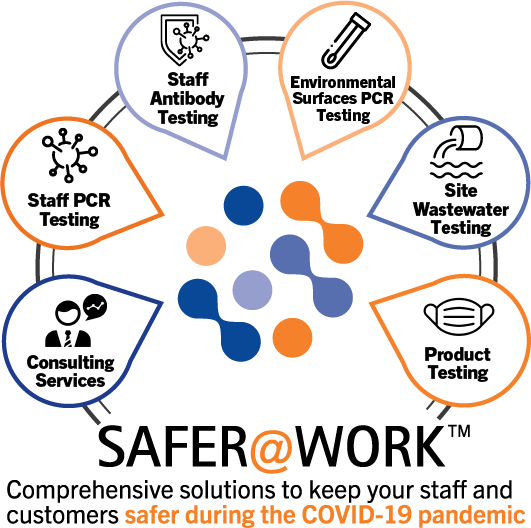Introduction
In the dynamic world of mobile app development, SDKs (Software Development Kits) have emerged as indispensable tools, empowering developers to seamlessly integrate various functionalities and services into their applications. From mapping providers to payment gateways, SDKs offer a simplified interface that streamlines development and enhances user experience. This streamlined development process can be an often-overlooked key driver for adoption for tech startups and really help you get ahead of the competition.
At Foresight Mobile, we specialise in crafting top-notch mobile SDKs that empower developers to unlock the full potential of their apps. In this blog post, we delve into the best practices for developing mobile SDKs, guiding you through the intricacies of creating robust and user-friendly SDKs that stand out from the crowd.

17 Steps to SDK Success
Following are 17 straightforward guidelines which when followed correctly should provide a great baseline for a successful SDK project.
Simplicity is Key: Prioritise Easy Integration
A fundamental aspect of a successful SDK is its ease of integration. Developers should be able to incorporate your SDK into their projects without encountering unnecessary complexities or roadblocks. Ensure that the integration process is well-documented, with clear instructions and examples to guide developers through each step. The Developer Experience(DevEx) may make the difference between choosing your service or that of a competitor. Ensure that your SDKs are not only straightforward to integrate but also follow principles idiomatic to the platform - e.g. providing LiveData interfaces for Android developers.
Comprehensive Documentation: A Developer's Guide
Thorough and well-structured documentation is the cornerstone of a user-friendly SDK. Provide comprehensive documentation that covers all aspects of the SDK, including installation, configuration, API usage, and troubleshooting. Make sure the documentation is easy to navigate, with clear explanations and code samples to illustrate key concepts. If possible, generate most of your API documentation using language-specific tools like KDoc or DocC.
Resource Efficiency: Mindful Consumption
Mobile devices are often constrained by limited resources, such as battery life and processing power. Your SDK should be designed to minimise its impact on these resources. Optimise code for efficiency, avoid unnecessary background processes, and be mindful of network usage. Developers using your SDK may call it from the UI thread more often than you'd like, so be mindful of blocking this in your architecture.
Permission Transparency: Clear Communication
Transparency regarding permissions is crucial for building trust with developers and end-users. Clearly communicate the permissions your SDK requires and explain the reasons behind each permission request. Avoid requesting unnecessary permissions that could raise privacy concerns.

Third-Party Libraries: Use with Caution
While third-party libraries can be valuable additions, their use should be carefully considered. Evaluate the necessity of each library and ensure that it doesn't introduce compatibility issues or bloat the SDK's size. Prioritise well-maintained and reputable libraries that align with your SDK's goals, and ensure that the version requirements you pass to your users are wide to avoid version conflicts.
Size Matters: Keep it Compact
A large SDK can significantly impact app size and performance. Strive to keep your SDK as compact as possible without compromising functionality. Use code optimisation techniques, remove unnecessary features, and consider modularising the SDK to allow developers to include only the components they need.
Conflict Avoidance: Play Well with Others
Your SDK should coexist harmoniously with other SDKs and libraries within an app. Avoid introducing conflicts or compatibility issues that could disrupt the app's functionality. Thorough testing and careful design choices can help ensure seamless integration with other components.
Compatibility Across Platforms: Embrace Diversity
Mobile apps span a diverse range of operating systems and device types. Your SDK should be compatible with the relevant platforms and versions, ensuring that developers can integrate it seamlessly across their target audience. This is especially relevant for cross-platform frameworks like Flutter, where Foresight will employ the Federated Platformspattern to organise the code logically and allow other developers to contribute.
Quality Assurance: A Cornerstone of Excellence
Rigorous testing is paramount for delivering a high-quality SDK. Implement a comprehensive testing strategy that covers various scenarios, devices, and operating systems. Automated testing tools can streamline the process and ensure consistent quality. A good example app will exercise the SDK functionality well and allow for manual testing across multiple real devices.
Security and Privacy: A Paramount Concern
Security and privacy are of utmost importance in today's digital landscape. Your SDK should adhere to industry-standard security practices, protecting user data and preventing unauthorised access. Be transparent about your data handling practices and provide clear privacy policies and licenses to your developers, which they can in-turn display in their own apps when required using e.g. showAboutDialog in Flutter.
Future-Proofing: Embracing Evolution
The mobile landscape is constantly evolving, with new technologies and platforms emerging regularly. Your SDK should be designed with adaptability in mind. Plan for future updates, ensuring compatibility with new operating system versions and incorporating new features as needed. In particular you should pay special attention to upcoming iOS and Android versions by testing against beta releases.

Communication and Feedback: Keeping Developers Informed
Effective communication with developers is crucial for maintaining a thriving SDK ecosystem. Inform developers about new features, bug fixes, and deprecation plans. Provide clear migration guides when deprecating older features.
Gathering feedback from developers is invaluable for refining your SDK. Encourage developers to provide feedback through channels like GitHub Issues and forums. Actively engage with the developer community to identify areas for improvement and address any concerns. If your developers are kind enough to suggest changes, review and integrate PRs where appropriate.
SDK Analytics: Gaining Insights
Implementing SDK analytics can provide valuable insights into usage patterns, error occurrences, and performance metrics. Use this data to identify areas for improvement, prioritise feature development, and optimise the SDK for real-world usage scenarios. Also be conscious about privacy concerns, and be transparent about any tracking included in your SDK. You should allow developers to switch off this tracking if applicable.
Sample Code and Examples: Enhancing Usability
Providing developers with sample code and usage examples can significantly enhance the usability of your SDK. Create clear and concise examples that demonstrate common use cases and illustrate the SDK's capabilities, like you can see here in the Kotlin SDK documentation that we produced for Flagsmith.
The example app approach can accelerate developer adoption and reduce the learning curve, as well as providing a handy way for your developers to raise reproducible issue reports using example app modifications.
Error Handling and Logging: Addressing Issues Gracefully
Robust error handling and logging mechanisms are essential for ensuring a smooth developer experience. Provide clear error messages that explain the cause of the issue and offer potential solutions. Implement logging mechanisms that allow developers to track down problems and troubleshoot effectively.
Versioning and Release Management: Maintaining Order
Adopt a clear and consistent versioning scheme for your SDK releases. Communicate version changes effectively, highlighting new features, bug fixes, and deprecation plans. Provide migration guides when introducing significant changes to ensure a smooth transition for developers. Most mobile platforms have adopted Semantic Versioning(SemVer).
Support and Maintenance: A Long-Term Commitment
Provide ongoing support and maintenance for your SDK, addressing bug reports, answering developer queries, and releasing timely updates. Demonstrate your commitment to the SDK's longevity and foster a sense of trust among developers. This support process can also help with how your SDK is rated amongst the competition, e.g. Flutter Pub Points system.
Conclusion
By adhering to these best practices, you can craft mobile SDKs that stand out for their ease of use, efficiency, and reliability. Remember, a well-designed SDK not only empowers developers but also enhances the overall user experience, fostering a thriving ecosystem around your services.
At Foresight Mobile, we are passionate about creating exceptional mobile SDKs that empower developers to build innovative and engaging applications. Contact us today to discuss how we can help you take your service to new platforms with our SDK development services.








